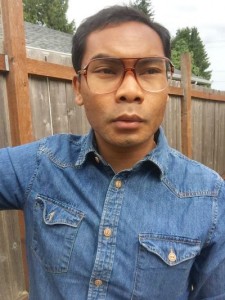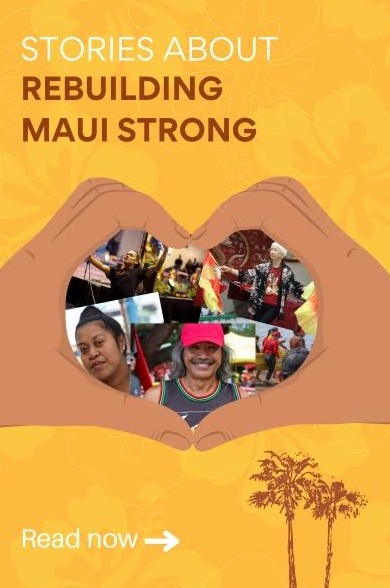
By Sharon H Chang
(editor note: This story was originally published by Think Progress and is republished here with their permission)
It is often difficult for Sameth Mell to speak about himself and his family on a warm Saturday morning in White Center, Seattle, Washington. He pauses to piece through a partially known past, is interrupted by his own thoughts, stopped short by painful memories, choked by tears and grief.
Sameth is an Asian American who has lived in the greater Seattle area since he was three years old. Asians in America are commonly stereotyped as economically successful, very educated and socially mobile. But Sameth’s lived experience defies the stereotype. He was born in 1982 inside a Thai Refugee Camp called Kao I Dang not long after his mother watched her entire family executed by the Khmer Rouge in Cambodia. He is a Cambodian/Khmer refugee who grew up poor in the United States.
All together, Sameth’s mother gave birth to nine children. Four died from malnutrition in Cambodia. Shortly after Sameth was born in camp, his father passed away from leukemia. After many years of waiting and saying goodbye to family members, they were finally resettled in the United States in 1985, a single mother with multiple children and few places to turn for help.
Upon arrival to the U.S., the family was placed by housing services in a cramped one-bedroom apartment in Tukwila, Washington. Eventually they moved to a slightly less cramped three-bedroom apartment in High Point, a housing project by the Seattle Housing Authority, where Sameth spent most of his childhood. The number of family members residing in this second apartment shifted occasionally but at the highest point, eight people lived there all together.
The Mell family story of struggle and hardship is not what most Americans think of when they hear “Asian American.” The typical story is one of glamorous Asian and immigrant success, infused with wealth and high educational achievement. In 2012, for example, the Wall Street Journal published a Saturday essay entitled “Rise of the Tiger Nation” which purported Asian Americans now “share with American Jews both the distinction and the occasional burden of immigrant success.” Pew Research Center invited America to “meet the new immigrants” in a 2013 report on Asian Americans, calling them “the highest-income, best-educated and fastest-growing racial group in the United States.” Nielsen became enamored with supposed Asian American wealth, titling two consumer reports on Asian Americans Significant, Sophisticated, and Savvy, and Culturally Connected and Forging the Future.
Most of the discourse is about high-achievement and how successful Asians are
This mainstream idea that Asian Americans are a prosperous monolithic group, however, is dangerously homogenizing, warned Professor Karthick Ramakrishnan, Professor and Associate Dean at the School of Public Policy, UC Riverside, and founder of AAPI Data. “Most of the discourse is about high-achievement and how successful Asians are,” he said, “There is an element of truth to those statements but people often stop there…[which] can mask the wide variation in the community.” The reality is that Asian American poverty is actually growing, and there are Asian American subgroups who are astoundingly poor.
The trend of rendering Asian American poverty invisible occurs everywhere. From 2007-2011, in the wake of the Great Recession, a U.S. Census report appeared to show that Asians have one of the lowest national poverty rates of any race, comparable to if not even lower than whites. By contrast, according to the Census, the highest national poverty rates were for Blacks or African Americans (25.8 percent) and American Indians and Alaska Natives (27 percent).
But according to a report co-authored by Ramakrishnan and Farah Z. Ahmed for the Center for American Progress last year, Asian Americans are actually one of the fastest-growing populations in poverty since the Great Recession. During that same Census reporting period from 2007-2011 Ramakrishnan and Ahmed showed the number of Asian Americans living in poverty rose by 37 percent — well surpassing the U.S. national increase of 27 percent. And according to the White House Initiative on Asian Americans and Pacific Islanders, certain Southeast Asian groups rank among the nation’s poorest: 29.3 percent of Cambodians and 37.8 percent of Hmong live in poverty.
Poor Asian Americans are, more than any other racial/ethnic group, disproportionately concentrated in metro areas with some of the most expensive housing markets. About half of Asian Americans living in poverty live in just 10 cities: New York, Los Angeles, San Francisco, Chicago, San Jose, Houston, Sacramento, Philadelphia, Boston and Seattle. It is not uncommon for refugees to face homelessness all over again once arriving in America. Seattle, where Sameth’s family was resettled, has the third largest Cambodian community in the United States but is one of the nation’s fastest-gentrifying metro areas. The cost of living is currently up to 10 percent more expensive than the national average.
Asian Americans also represent one of the highest rates of senior poverty of any racial/ethnic group. “Health insurance is very expensive, living standards are very expensive,” said Gary Tang, Director of Aging and Adult Services at Asian Counseling and Referral Service. “Even if [Asian elders] have savings from their home culture, it’s impossible to save enough to prepare for your ‘golden years’ in the U.S.”
Even when Asian elders were educated in their home countries, their professional skills are often not recognized in the U.S. and their lack of English language proficiency makes it very difficult to hold a job. Thus they experience high unemployment and extreme social isolation. Tang said 2014 racial disparity data on older adults (65+) living in King County, Washington, showed 19 percent of older Asian Americans live in poverty, just a sliver behind the 19.5 percent of older African Americans. Meanwhile, a much lower 6.7 percent of older whites were living in poverty even though they represented 82 percent of the total King County senior population.
Are we showing up in data? We’re not visible.
“A lot of time we Asian Americans suffer from being generalized as one group,” Tang said, pointing out that the umbrella term “Asian American” really encompasses 48 language groups. “The general public perceives [Asian as] high education, high achievement, model minority, therefore they do not have issues of poverty and homelessness.”
Indeed one of the most challenging things about Asian American poverty in the United States is that Americans fundamentally do not know it exists, said Ramakrishnan. “People probably know any community in the U.S. has poverty,” he said, but when it comes to Asians, “There are specific voices rendered invisible.” He emphasized it is crucial to ask, “Who does not get headline status when we talk about Asians and Asian Americans?”

Photo courtesy Sameth Mell
Sameth knows the answer to this question all too well. “Growing up here as Khmer American I realized we don’t get our voice heard a lot as Khmer people,” he said. He described his community as “rampant with poverty”; a reality invisible to the larger American society. With a few exceptions, explained Sameth, almost all Khmer as refugees start in the same impoverished place when they arrive in the U.S. needing social services like cash assistance, housing, language classes, vocational training and medical care. Yet “how often do you come across real southeast Asian concerns?” Sameth underscored with palpable frustration. “Are we showing up in data?” He paused. “We’re not visible.”
National poverty rates actually obscure growing Asian American poverty because there have been large influxes of highly educated, highly skilled Asian immigrants at the same time that impoverished refugee communities were fleeing to the U.S. In the 1970s and 1980s, for example, many South Asian immigrants came to the United States with high levels of education or to study in graduate programs, and so were able to enter into middle class or white collar professions. Massive numbers of Southeast Asian refugees with few resources or skills migrated during the same time frame due to wars in southeast Asia, particularly the Vietnam War. As a result, the aggregated data is skewed by the successful-outcome groups.
“Heavy over-generalization makes it difficult for many,” Tang explained. “Especially Southeast Asians, Cambodian, Hmong, Lao and Vietnamese, who came to the U.S. [as refugees] after 1975. Refugees lost their loved ones, have PTSD and a lot of different challenges.”
PTSD is endemic amongst the elders of Sameth’s Cambodian American community, who are traumatized by war and genocide, and also affects younger generations, including Sameth himself, who experience the repercussions in the form of intergenerational trauma. Unfortunately, Tang added, services to support such suffering populations are woefully inadequate. Before 1996, refugees received financial assistance and medical care for up to 2-3 years post-settlement. Refugees had time to learn English, attain employment skills, and find jobs. But welfare policy changed in 1996, and today refugee assistance is limited to 9 months post-settlement. “Every community needs time to establish an infrastructure to support themselves,” said Tang. “Refugees don’t have that now.”
Sameth confirmed his community is not getting the comprehensive services and resources they need. As a result, he explained, Cambodian Americans just do what it takes to survive. And surviving as Asian and poor in America takes creativity, resourcefulness, and sticking together. He said many pick up odd jobs for under-the-table cash, picking berries during the summer, selling crabs and fish to local markets, sewing, and collecting recyclables off the streets. Some who are undocumented will use other people’s identities in order to get work. “But also, people participated in lending circles,” where members of the community give each other loans as needed, Sameth said. “Lending circles were practiced in our culture way before [the] mainstream caught on to and appropriated the practice.”
Sameth said his people “make sure everybody’s taken care of” and “watch out for each other.” He also pointed out that everyone always remembers poverty back in Cambodia is even more dire. Though Cambodian Americans struggle, they make a point to give what they can to their homeland. “They send money back home,” he relayed, his eyes full with tears, sadness and pride. “Those folks that have nothing here have such a good, big heart. They’re giving whatever they can, ten, fifteen, twenty bucks, taking it in a pool, bringing it back to Cambodia to the people down in the countryside.”
Sameth is infuriated to see little to no U.S. recognition of these struggles or the resilience and resistance of his people. Especially since it was America’s secret bombing of Cambodia under the Nixon administration during the Vietnam War that lead to the rise of the Khmer Rouge which executed his mother’s family, Sameth believes the government owes the refugee community that resulted. “You got some shit that you did to our country and you have the audacity to act like you can’t give us resources? You kidding me?” he said. “You bombed my country. You devastated our countryside. You fu*ked up our politics…You did all this so when we’re over here, you’re still treating us like sh*t. Give us the resources so that we can actually rebuild our pride in ourselves and our community.”
This frustration spurred Sameth Mell to become the person he is. “I want America to know we might be impoverished but we’re warriors. We’re spiritually enriched,” he said. Today Sameth is widely active in his community. He is Director of Community Development and Relations for Khmerican LLC, Director of Rajana Society (a national Khmer arts organization), board member for Coalition of Immigrants, Refugees and Communities of Color (CIRCC), Co-Chair for Housing Development Consortium’s Resident Services Affinity Group of Seattle/King County, Chair-Elect for the Financial Empowerment Network of Seattle/King County, and Resident Services Coordinator for Mt. Baker Housing. A few days after this interview, he was on his way back to Cambodia to lead a youth group on a YMCA Cambodia journey.
When asked if he saw himself as an organizer and activist on behalf of his community, Sameth hesitated. “You know what? I just see myself as a community member,” he replied, “And that’s a part of the reason why I take myself back and want to organize within my community…I want America to know we matter a lot.” He summed up his efforts and the efforts of his people here in the United States: “We’re fighting to be visible. Because we need that space to survive.”
Sharon H. Chang is an author, scholar, sociologist and activist focusing on racism and social justice with a feminist lens. Her work has been featured in Racism Review, The Seattle Globalist, Hyphen Magazine, ParentMap Magazine, AAPI Voices and is the author of an upcoming book, Raising Mixed Race.



